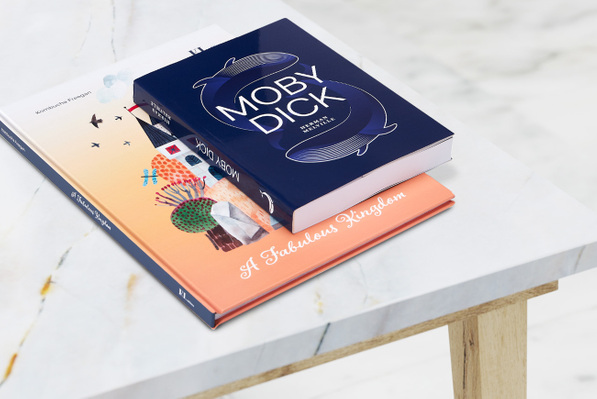Which is the right cover?
Do you need to print a publication? Are you wondering whether your book or catalogue would be better with a hardback cover or paperback? Read our thoughts below and decide how to print your book or catalogue.
Hardcover vs paperback
HARDCOVER VS PAPERBACK: WHICH IS BEST FOR MY PUBLICATION?
There are lots of elements to consider when creating and printing a book: they take time, money and effort to produce so you want to get the best results.
As well as the content of the publication, you should also think about the look of it because even though we shouldn't in theory, we all judge a book by its cover to some extent.
That's why it is important to consider the type of paper you will use, the binding and the look you want the cover of your publication to have. Which would be better, hardback or paperback?
As always, it depends! Whether you choose a hardback cover or paperback is particularly important because it has a significant visual and tactile effect, and if you want to make an impact on your readers or customers, you don't want to make a mistake. But what should you base your decision on when choosing the right cover? And what is the difference between a hardback cover and a paperback? We'll try to clarify for you.
BINDING DIFFERENCES
The first difference to consider is the finish and binding. Paperback books are often made with perfect binding, a technique where the spines of the pages are glued to the cover. However, hardback books require a more precise type of binding, such as sewn binding, where the pages and cover are sewn together, making the publication look more elegant.
PRACTICALITY AND DURABILITY OF THE COVER
Another element to consider is the flexibility and practicality of the cover compared to its durability.
A hardback book will definitely be more resistant and its cover could last longer. Therefore, this type of cover could be better for publications intended for intensive use, like study books, dictionaries or children's books, because we know that children often don't take proper care of their books
A hardback cover is also suitable for publications containing lots of pages and keeps the book more organised. However, the lack of flexibility could be a disadvantage and make it harder to carry a hardback book in a bag or backpack.
A paperback cover, on the other hand, has similar advantages and is ideal for publishing a guide, a catalogue, a brochure or other publications that aim to be practical, manageable and easy to carry.
SO, TO SUM UP: WHEN SHOULD YOU CHOOSE A HARDBACK COVER?
A hardback cover is recommended for:
Lengthy publications consisting of many pages
Giving the publication a sense of distinction
Guaranteeing durability and resistance to wear
Providing a pleasant tactile effect
WHY CHOOSE A PAPERBACK COVER?
A paperback cover is perfect for editorial products, catalogues and guides that you want to be effective and manageable.
For practical, versatile and easy-to-carry publications
For a book with a modern look
To save money on printing costs
PRINT YOUR BOOK ONLINE WITH A HARDBACK OR PAPERBACK COVER
In conclusion, you could say that choosing a hardback cover will be more expensive but it will also give you a more elegant, resistant and durable publication. Whereas a paperback cover will cost less and be more flexible and manageable.
If these suggestions have helped you make a decision, now is the time to print your publication. Choose a product type and follow a few simple steps on the page to send your books or catalogues to print and have them delivered to your home or office in just a few days.
WHAT IF YOU NEED HELP ?
Don't worry, if you have any questions or problems, you can contact our Customer Support seven days a week. How? By calling: 020 3871 8720, emailing support@pixartprinting.com or using the convenient chat that you can find at the bottom right.
In fact, the flexible cover is perfect for the publication of guides, catalogues, or any publication aiming to be practical, handy and easily transportable.
Paperback
Hardcover
The hard cover gives more resistance to your publication and allows it to last longer over time. It can therefore be more suitable for publications intended for intensive use.
Which is the best kind of cover?
Why choose us?
DEDICATED TO QUALITY
THE BEST VALUE FOR MONEY
PROFESSIONAL ADVICE
FAST AND RELIABLE
3 MILLION PRODUCTS
Get help from our designers.
Do you know our
design services?











